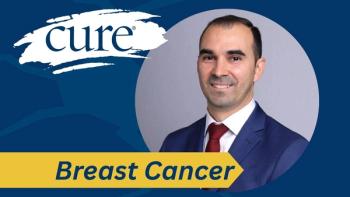
Understanding Minimally Invasive Lung Cancer Care Advancements
Dr. Daniel J. Boffa discusses advancements in lung cancer care, including the role of minimally invasive surgical techniques and new systemic therapies.
Dr. Daniel J. Boffa, professor and division chief of Thoracic Surgery at Yale School of Medicine in New Haven, Connecticut, sat down with CURE to discuss the evolving landscape of lung cancer treatment.
In the interview, he highlights major advancements that are transforming patient care, including the role of minimally invasive surgical techniques that preserve lung function and new systemic therapies such as immunotherapy and targeted therapy. These innovations are enabling more precise treatments and personalized approaches to improve outcomes while minimizing side effects for patients with lung cancer.
Transcript
Lung cancer research has evolved rapidly in recent years. What are some of the most significant advancements in the treatment of the disease that patients should know about?
The first is the realization that some people who have a particularly high risk, such as smokers, can reduce their chance of developing lung cancer and potentially shortening their life by participating in screening. There is a yearly CT scan, which takes only a few minutes, and if you are eligible (typically 50 or older and have smoked in the past or are still smoking) you can receive this scan. It allows us to catch lung cancers earlier, when treatments are easier and patients are much more likely to be cured. I think that’s the first big discovery.
The second relates to how we are able to treat people. At early stages, we now know that minimally invasive surgical and non-surgical approaches can help eliminate the cancer. For small tumors, removing less lung tissue is safe and effective, allowing people to retain more of their normal lung function. For cancers that have already spread to lymph nodes or vital organs, we now have completely new ways of targeting the cancer cells. In the past, we would use chemotherapies that affected many different cell types in the body, causing widespread side effects. The new generation of lung cancer treatments is much more specific to the cancer cells, resulting in fewer side effects and greater effectiveness.
Immunotherapy is one approach that is particularly exciting, as it allows patients to use their own immune system to fight cancer. Targeted therapy is another, taking advantage of genetic changes that cancer cells have but are absent in the rest of the body. These drugs attack only the cancer cells, making them highly effective. While these treatments don’t work for everyone, they do work for subsets of patients, and the more options we have, the more patients have the opportunity for effective, personalized care.
Transcript has been edited for clarity and conciseness.
For more news on cancer updates, research and education,





